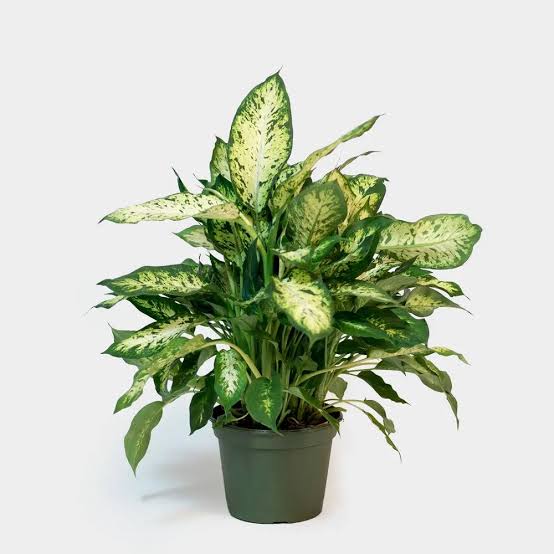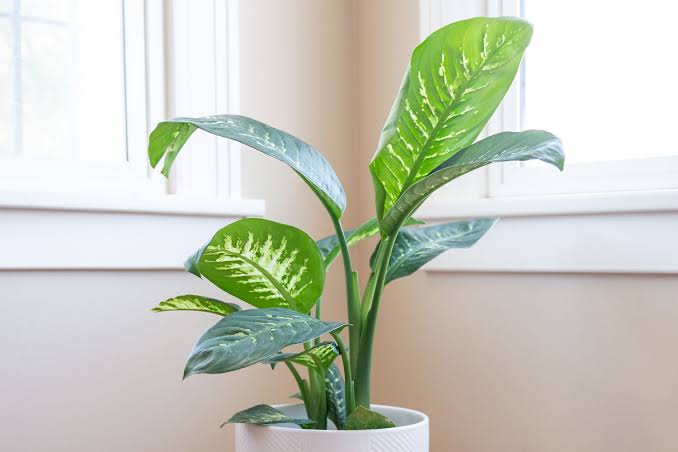Dieffenbachia is a popular houseplant that is known for its attractive foliage. It is relatively easy to care for, but there are a few things you need to know to keep it healthy and thriving.
Light: Dieffenbachia prefers bright, indirect light. Avoid placing it in direct sunlight, as this can scorch its leaves.

Water: Dieffenbachia needs to be kept moist, but not soggy. Water it when the top inch of soil is dry.
Soil: Dieffenbachia prefers a well-draining potting mix. A mix that is specifically designed for tropical plants is ideal.
Fertilizer: Dieffenbachia does not need to be fertilized often. Fertilize it once a month during the spring and summer with a balanced fertilizer.
Humidity: Dieffenbachia prefers high humidity. If the air in your home is dry, you can mist the leaves of your plant with water occasionally.
Pests and diseases: Dieffenbachia is relatively pest- and disease-free. However, it can be susceptible to mealybugs and spider mites. If you see any pests on your plant, treat them immediately with an insecticidal soap or neem oil.
Propagation: Dieffenbachia can be propagated from stem cuttings. Simply cut a healthy stem that is about 6 inches long and remove the bottom leaves. Plant the cutting in a pot filled with well-draining potting mix and keep the soil moist. The cutting should root in a few weeks.
Pruning: Dieffenbachia can be pruned to encourage new growth. Simply cut back any leggy or unhealthy stems.
Potting: Dieffenbachia should be repotted every two to three years, or when they outgrow their current pot. Choose a pot that is one size larger than the current pot and make sure that the pot has drainage holes.
Temperature and humidity: Dieffenbachia prefers warm temperatures between 65 and 75 degrees Fahrenheit. They can tolerate lower temperatures, but their growth will slow down. Dieffenbachas also prefer high humidity, but they can tolerate low humidity. If the air in your home is dry, you can mist the leaves of your plant with water occasionally.
Watering: Dieffenbachias should be watered when the top inch of soil is dry. Water thoroughly and allow the excess water to drain out of the pot. Do not overwater, as this can lead to root rot.
Fertilizer: Dieffenbachias should be fertilized once a month during the spring and summer with a balanced fertilizer. Use a fertilizer that is diluted to half strength. Do not fertilize during the fall and winter.
Pests and diseases: Dieffenbachias are relatively pest- and disease-free. However, they can be susceptible to mealybugs and spider mites. If you see any pests on your plant, treat them immediately with an insecticidal soap or neem oil.
With proper care, your dieffenbachia will thrive for many years.
Here are some additional tips for caring for dieffenbachias:
- Dieffenbachias are poisonous to both humans and animals. If you have children or pets, it is important to keep the plant out of reach.
- Dieffenbachias can be toxic to the skin, so it is important to wear gloves when handling the plant.
- Dieffenbachias can be propagated from stem cuttings or from air layering.
- Dieffenbachias can be grown in hanging baskets or in pots on the floor. They make a great addition to any indoor space.

